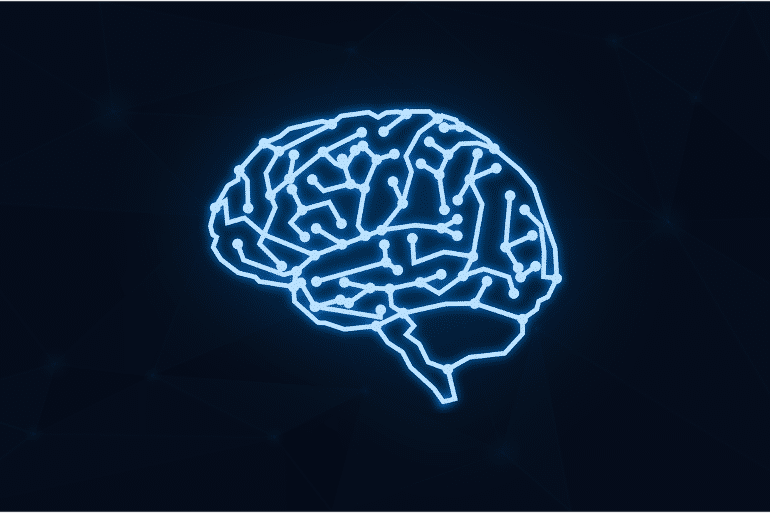Summary: Dopamine neurons largely rely on their own discharge to determine release rates of the hormone, researchers report.
Source: NYU Langone
In addition to smoothing out wrinkles, researchers have found that the drug Botox can reveal the inner workings of the brain. A new study used it to show that feedback from individual nerve cells controls the release of dopamine, a chemical messenger involved in motivation, memory, and movement.
Such “self-regulation,” the researchers say, stands in contrast to the widely held view that the release of dopamine — known as the “feel good” hormone — by any cell relied on messages from nearby cells to recognize that it is releasing too much of the hormone.
Led by researchers at NYU Grossman School of Medicine, the new study showed that dopamine-releasing brain cells respond to their own signals to regulate the hormone’s output. Because the death of dopamine-releasing brain cells is a key factor in Parkinson’s disease, the new findings provide insight into why these cells die in the movement disorder, the researchers say.
“Our findings provide the first evidence that dopamine neurons regulate themselves in the brain,” says study lead author Takuya Hikima, PhD. “Now that we better understand how these cells behave when they are healthy, we can start to unravel why they break down in neurodegenerative disorders like Parkinson’s disease,” adds Hikima, an instructor in the Department of Neurosurgery at NYU Langone Health.
Hikima says their study was prompted by what the research team saw as flaws in the older way of thinking about how dopamine works. First, for one cell to control its neighbor with dopamine, a large number of synapses, or junctions where two cells meet and exchange messages, would be required. Yet researchers say there were not enough synapses to account for this.
Second, many types of hormone-producing cells in the body use a streamlined system that self-regulates further release, so it seemed odd that dopamine neurons would use a more roundabout process.
For the study, publishing April 6 in the journal Cell Reports, the research team collected dopamine neurons from dozens of mice. They injected some of the brain cells with Botox, a toxin that blocks nerve cells from sending chemical messages to neurons and other cells. The chemical’s nerve-blocking action accounts for its ability to relax muscles in migraine and wrinkle treatments.
By injecting Botox into single neurons, says Hikima, the researchers hoped to show whether any signal to continue or stop dopamine release could only come from outside the “paralyzed” cell. If the neurons were in fact controlled by neighboring dopamine cells, then dopamine release would remain unaffected because the treated cells would still receive dopamine signals from the untreated cells nearby.

Instead, the findings revealed a 75 percent drop in dopamine outflow, suggesting that dopamine neurons largely rely on their own discharge to determine release rate of the hormone, according to the investigators.
“Since our Botox technique helped us solve the problem of how dopamine neurons regulate their communication, it should also enable us to uncover how other nerve cells interact with each other in the mammalian brain,” says study senior author Margaret Rice, PhD.
The research team next plans to explore other areas of dopamine neuron activity that remain poorly understood, such as the dependence of dopamine release on calcium from outside the brain cells, says Rice, a professor in the Departments of Neurosurgery and Neuroscience and Physiology at NYU Langone. The investigators also intend to examine how self-regulation of dopamine might contribute to cell death in Parkinson’s disease.
Funding: Funding for the study was provided by National Institute of Health grants R01 DA038616 and R01AI093504 and by the Marlene and Paolo Fresco Institute for Parkinson’s Disease and Movement Disorders.
In addition to Hikima and Rice, other NYU Langone researchers include Christian Lee, PhD; Paul Witkovsky, PhD; Julia Chesler, PhD; and Konstantin Ichtchenko, PhD.
About this neuroscience research news
Source: NYU Langone
Contact: Shira Polan – NYU Langone
Image: The image is in the public domain
Original Research: Open access.
“Activity-dependent somatodendritic dopamine release in the substantia nigra autoinhibits the releasing neuron” by Takuya Hikima et al. Cell Reports
Abstract
Activity-dependent somatodendritic dopamine release in the substantia nigra autoinhibits the releasing neuron
Highlights
- •Somatodendritic DA release is decreased by single-cell Na+-channel inhibition
- •Intracellular BoNT/A LC cleaves SNAP-25 and eliminates DA release from the cell
- •Synaptic GABA input to SNc DA neurons is unaffected by intracellular BoNT/A LC
- •Somatodendritic DA in the SNc autoinhibits the neuron that releases it
Summary
Somatodendritic dopamine (DA) release from midbrain DA neurons activates D2 autoreceptors on these cells to regulate their activity. However, the source of autoregulatory DA remains controversial.
Here, we test the hypothesis that D2 autoreceptors on a given DA neuron in the substantia nigra pars compacta (SNc) are activated primarily by DA released from that same cell, rather than from its neighbors. Voltage-clamp recording allows monitoring of evoked D2-receptor-mediated inhibitory currents (D2ICs) in SNc DA neurons as an index of DA release.
Single-cell application of antibodies to Na+ channels via the recording pipette decreases spontaneous activity of recorded neurons and attenuates evoked D2ICs; antibodies to SNAP-25, a soluble N-ethylmaleimide-sensitive factor attachment protein receptor (SNARE) protein, also decrease D2IC amplitude. Evoked D2ICs are nearly abolished by the light chain of botulinum neurotoxin A, which cleaves SNAP-25, whereas synaptically activated GABAB-receptor-mediated currents are unaffected.
Thus, somatodendritic DA release in the SNc autoinhibits the neuron that releases it.






